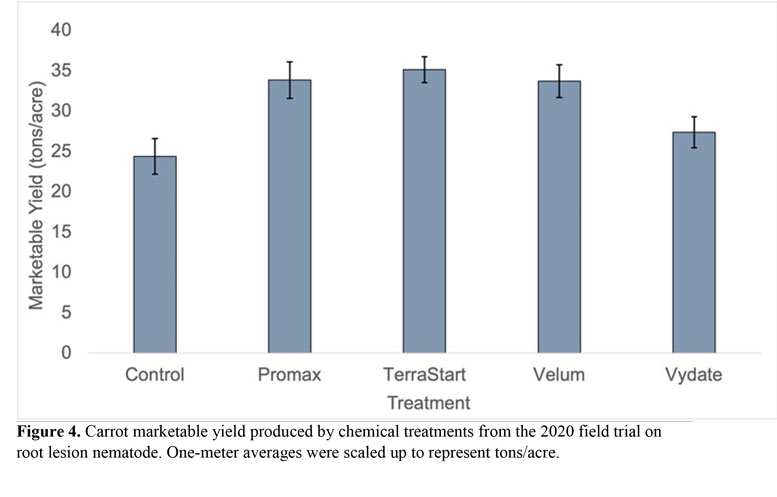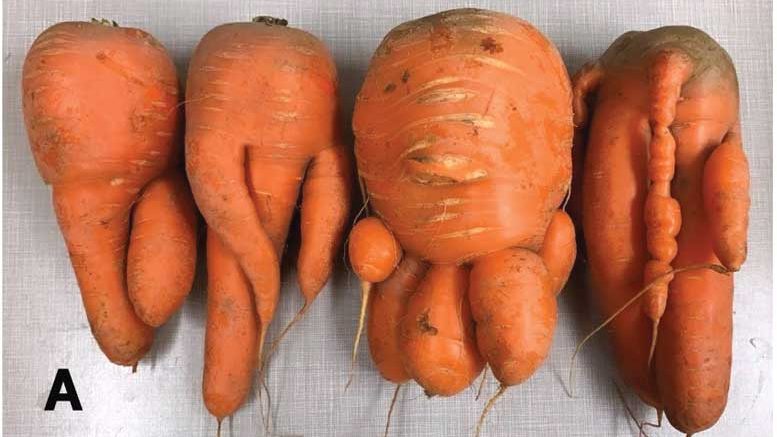|
Click to listen to this article
|
By Sita Thapa, Elisabeth Darling and Marisol Quintanilla, Michigan State University
Nematodes can cause both quantitative and qualitative yield loss for carrot growers. For example, a 2016 survey of carrot growers revealed that, on average, 25 percent of annual yield suffers from quality issues attributed to nematode damage in infested fields. Quality issues are especially severe for fresh market carrots, where forking and stubbing render the product unmarketable. Damage to root crops can be detected as early as 21 days after planting. These losses occur when an injury from nematodes such as root lesion (Pratylenchus penetrans) and northern root-knot (Meloidogyne hapla) results in forked or stubbed carrots.
Historically, carrot growers have associated severe plant-parasitic nematode damage with the root-knot nematode (Meloidogyne spp.) and, in some cases, the carrot cyst nematode (Heterodera carotae). However, more recently, the root lesion nematode (RLN) has become more prevalent in carrot fields with mineral soils. The economic threshold for RLN is 50-100 nematodes per 100cc of soil. Infection from threshold levels of RLN results in the production of unmarketable characteristics, such as hairy, stubby and forked carrots (Fig. 1).
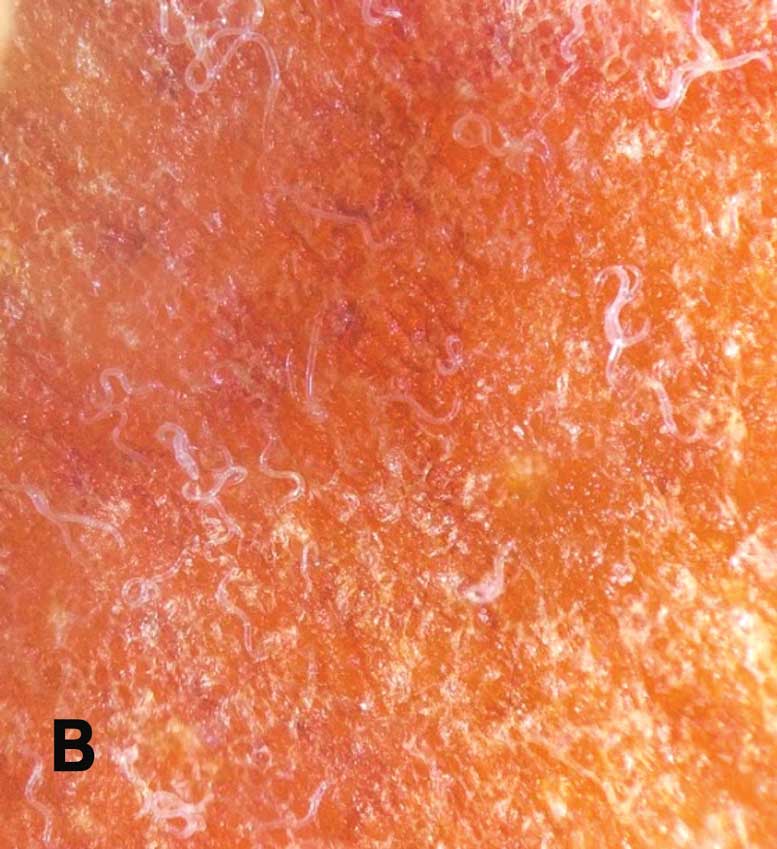
For nematodes like the northern root-knot nematode (NRKN) and the carrot cyst nematode, the best strategy is avoidance. Fields with infestations of the root lesion nematode will typically produce desirable yields so long as populations are kept below the threshold. It is critical that growers obtain nematode numbers prior to planting to avoid yield and quality loss from these nematodes.
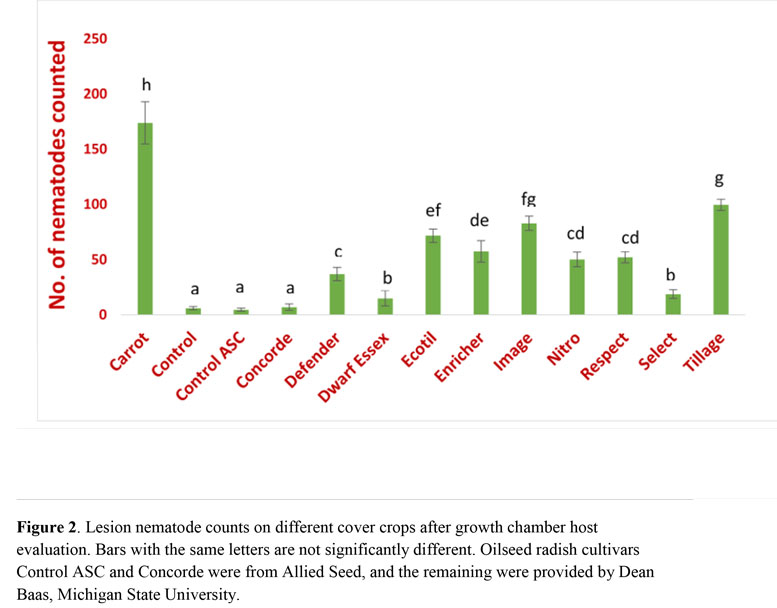
Non-Chemical Approach
A good cover crop for the management of plant-parasitic nematodes should be a poor host for nematodes and should lower the nematode population. In Michigan, growers are experimenting with brassica cover crops like oilseed radish (OSR), mustard and rapeseed because of several benefits including: 1) they are cold-season species and could be planted from late summer to early fall (July to September), 2) they are killed by frost and most of the residue is decomposed before crop planting in the spring, and 3) they may reduce nematode pressure by being a poor or non-host.
We evaluated the host status of several OSR and grass cover crops for NRKN and RLN. Our results showed OSR cultivars such as Control, Concorde and Select, as well as Dwarf Essex Rape, are poor hosts of RLN (Fig. 2). For NRKN, in addition to the OSR cultivars Control, Concorde and Select, grasses like Sudan grass, oats and wheat are poor hosts, too (Fig. 3). We have greenhouse trials going on for NRKN management using selected cover crops screened through host evaluation in growth chambers.
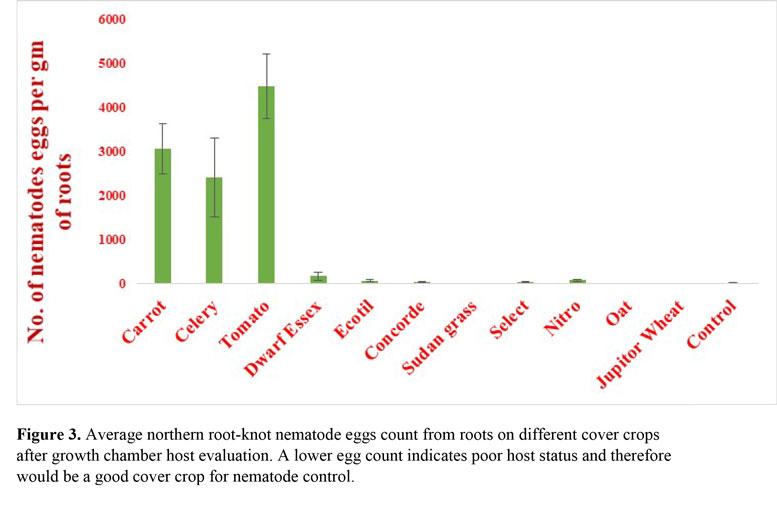
Chemical Approach
When nematode populations are above the threshold level, chemical management might be one option to consider. Typical conventional management strategies involve in-furrow or soil drench applications during planting. Due to recent increasing regulations on fumigants and toxic products, growers are seeking a reliable method of control for root lesion nematodes. Within the past few decades, an increasing number of conventional and organic nematicides have been released. Seeking alternative products for management is a great step; however, products need to be evaluated for efficacy in comparison to the existing grower standard (oxamyl).
In 2020, our laboratory conducted a carrot field trial in Oceana County, Michigan, to evaluate alternative nematicides against above-threshold root lesion nematode infestations. The trial included 10 nematicidal products applied at carrot planting and one untreated control, each with five replicates.
Overall, three products stood out for reducing root lesion nematode populations: Promax (thyme oil from Huma Gro), TerraStart (hydrogen peroxide/peroxyacetic acid from BioSafe Systems) and Velum (fluopyram from Bayer) within the first 30 days of seedling growth. Plots applied with these products correspondingly produced higher yields than untreated control plots (Fig. 4; Tukey’s HSD, P<0.1). Velum also reduced the weight of stubby carrots when compared to the untreated control. We aim to further evaluate these products in a controlled greenhouse setting in 2021 and repeat the field trial in 2022 with an increased number of replicates.
